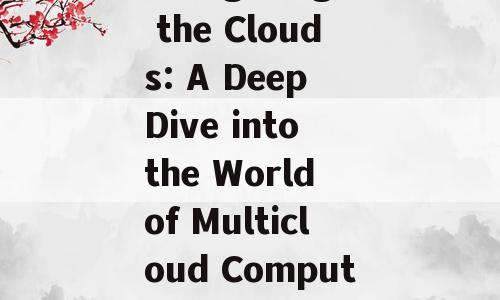Introduction
In the ever-evolving landscape of technology, one term has been making significant waves: multicloud. As organizations seek to optimize their IT infrastructures and embrace the flexibility and scalability that cloud computing offers, multicloud has emerged as a preferred strategy. This article delves into what multicloud computing is, its benefits, challenges, and why it has become a cornerstone of modern enterprise IT.
What is Multicloud Computing?
At its core, multicloud computing refers to the use of multiple cloud computing services from different providers. Unlike the monolithic approach of using a single cloud service, organizations adopt a multicloud strategy to leverage the strengths of different platforms and avoid vendor lock-in. This approach is particularly beneficial in environments where certain applications require specific cloud services or when disaster recovery and high availability are critical.
The Benefits of Multicloud Computing
One of the most significant advantages of multicloud is its ability to provide flexibility. Organizations can select the best cloud provider for each workload, whether it's a specialized service like AI and machine learning from Amazon Web Services (AWS), or enterprise collaboration tools from Microsoft Azure. This ensures that resources are allocated efficiently and that each application runs on the platform that best supports its needs.
Another key benefit is enhanced disaster recovery. With multicloud, organizations can distribute their data and applications across different providers, minimizing the risk of downtime and data loss in the event of an outage or cyber attack. According to Gartner, by 2025, 90% of enterprises will use a multicloud strategy as the default IT model, compared to 40% in 2021.
Challenges of Multicloud Computing
Despite its numerous benefits, multicloud computing also presents challenges. Managing data and applications across multiple clouds can be complex and resource-intensive. Integration issues may arise, and organizations need to ensure that they can securely move data and applications between different clouds without compromising on security or performance.
Case Study: A Multicloud Journey
To illustrate the practicality of multicloud, let's consider a hypothetical scenario. A mid-sized e-commerce company, E-ShopCo, decides to embrace a multicloud strategy. They use AWS for their primary e-commerce platform due to its robust e-commerce capabilities. However, they also integrate Azure for their customer relationship management (CRM) system, as Azure offers advanced AI capabilities that can improve their customer service. E-ShopCo also leverages Google Cloud for their data *** ytics and machine learning workloads, as Google's AI/ML services are considered best-in-class.
This multicloud approach allows E-ShopCo to leverage the best services available while maintaining a flexible and scalable infrastructure. It also provides them with a backup in case one of the clouds experiences an issue.
Security Considerations in Multicloud Environments
Security is a critical concern in multicloud environments. Each cloud provider has its own security protocols, and organizations must ensure that they implement a cohesive security strategy that covers all their platforms. According to a report by Cybersecurity Ventures, the global cost of cybercrime is expected to reach $10.5 trillion annually by 2025, making robust cybersecurity measures essential in multicloud settings.
Conclusion
Multicloud computing has become an indispensable strategy for modern enterprises looking to optimize their IT infrastructure. By offering flexibility, enhanced disaster recovery, and access to specialized services, multicloud is reshaping how businesses operate in the digital age. However, it is important to navigate the complexities and challenges associated with managing multiple clouds effectively. With the right approach, organizations can harness the full power of multicloud to drive innovation and efficiency in their operations.















还没有评论,来说两句吧...